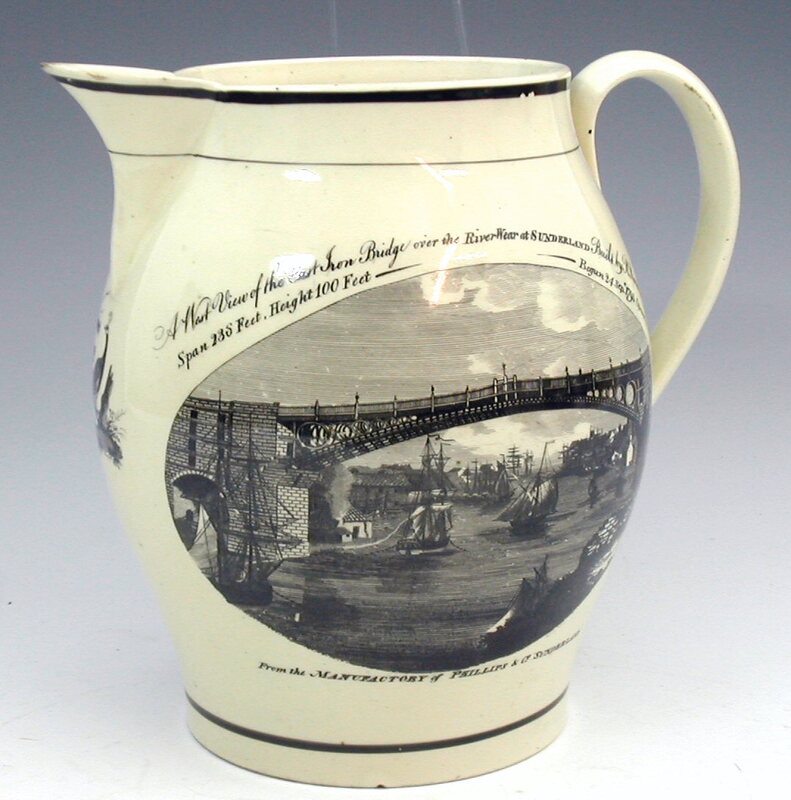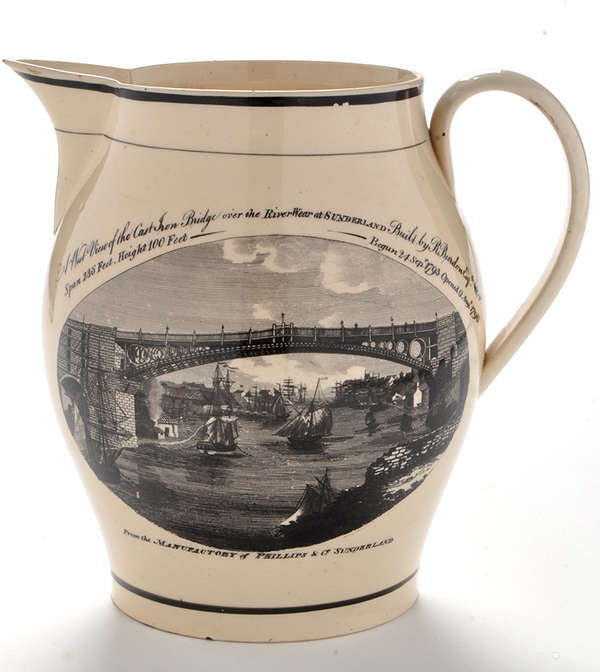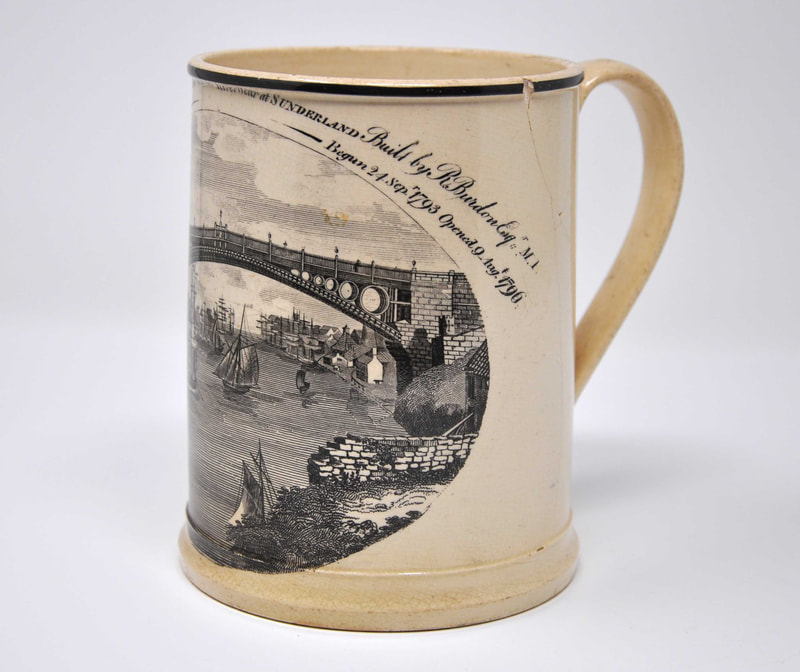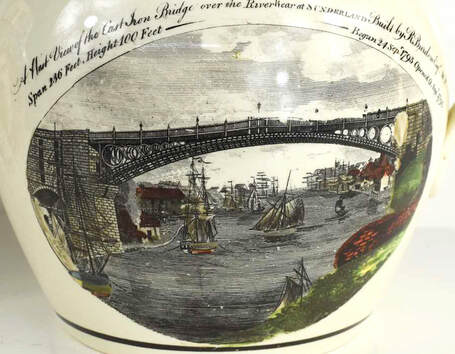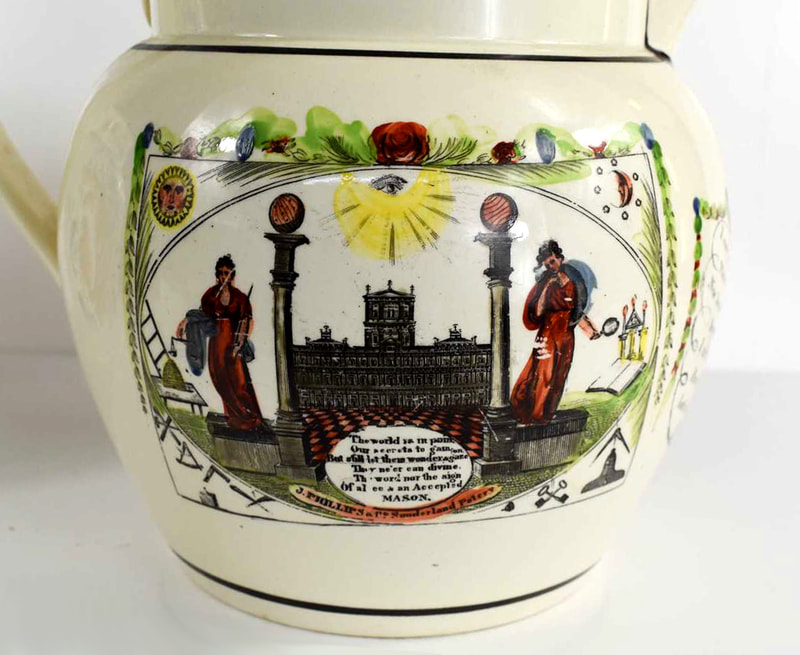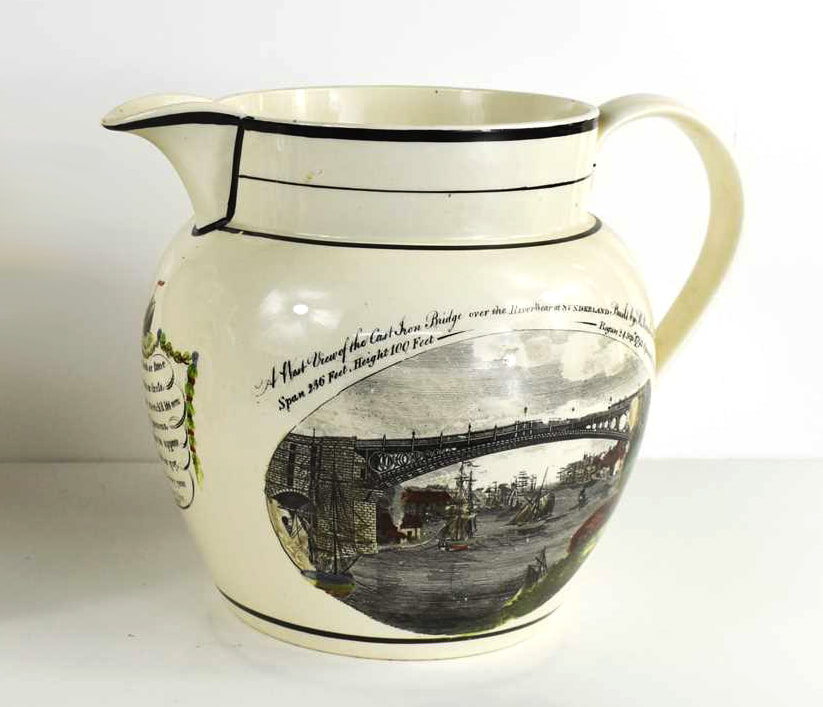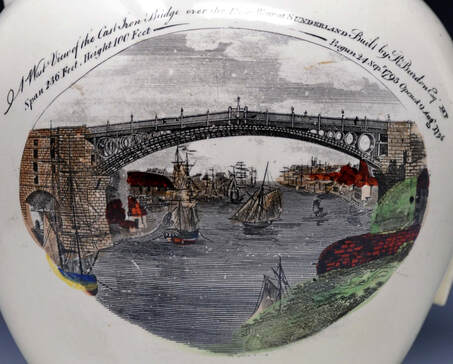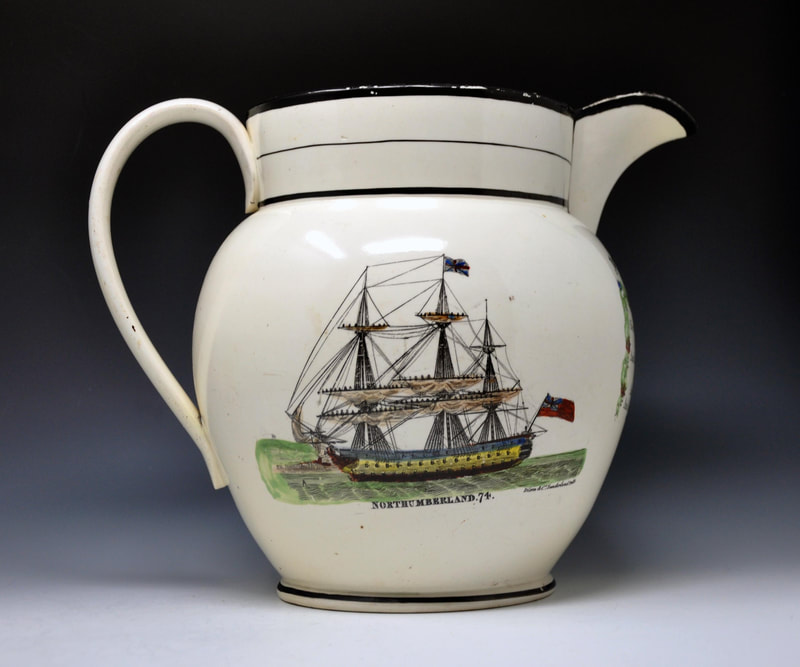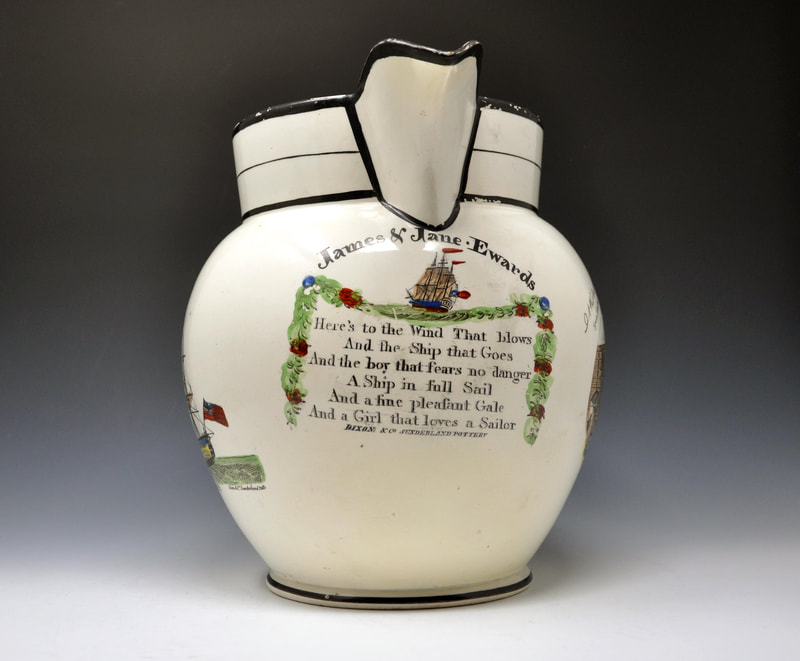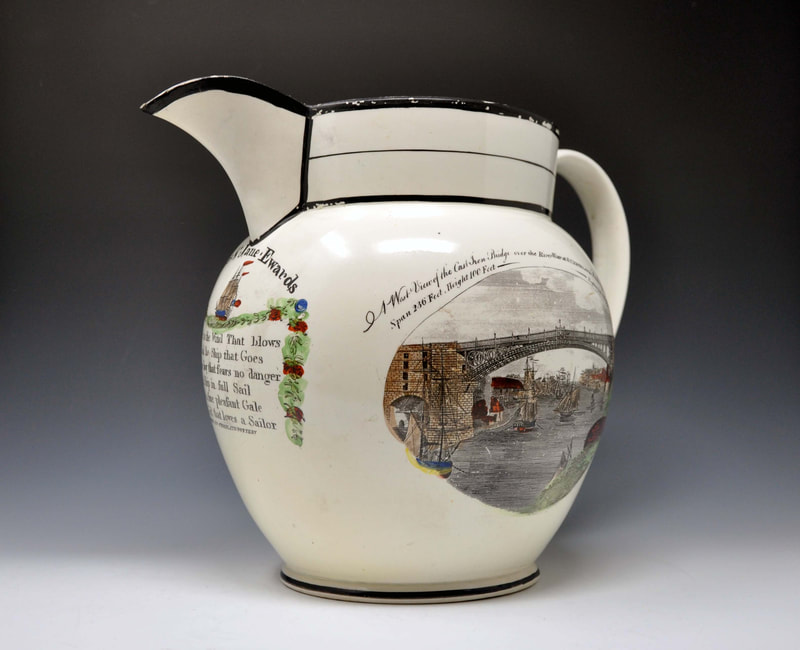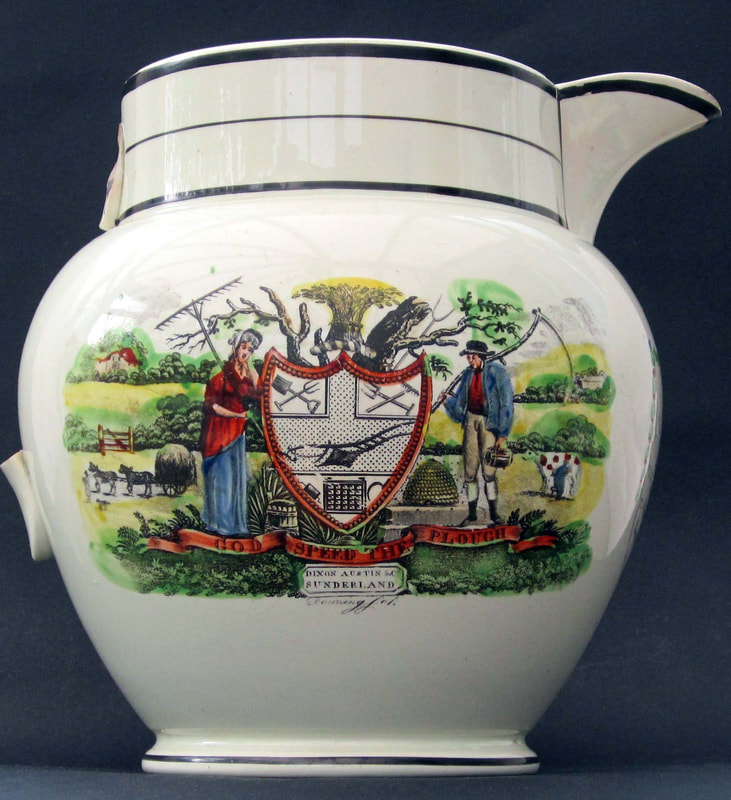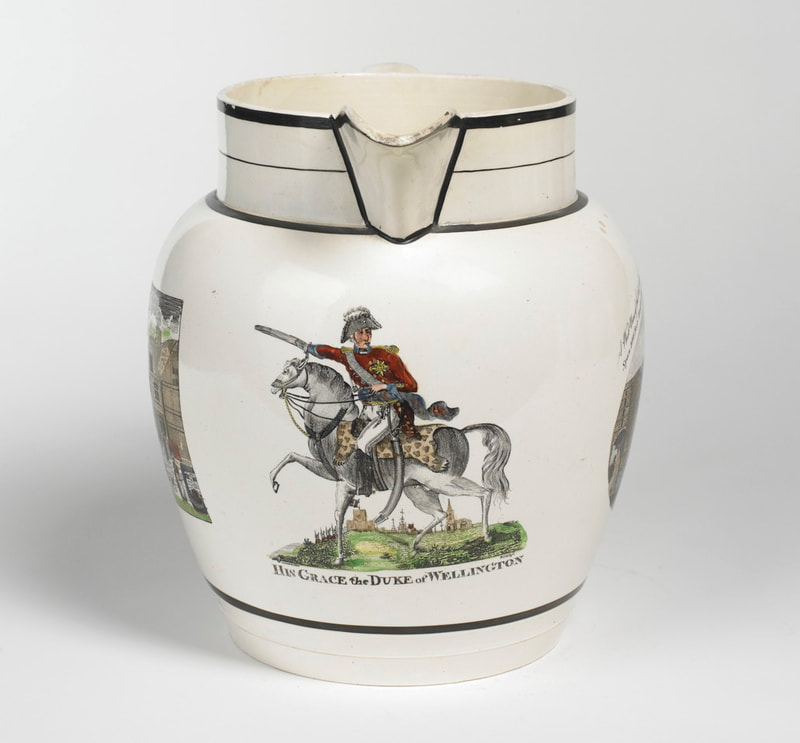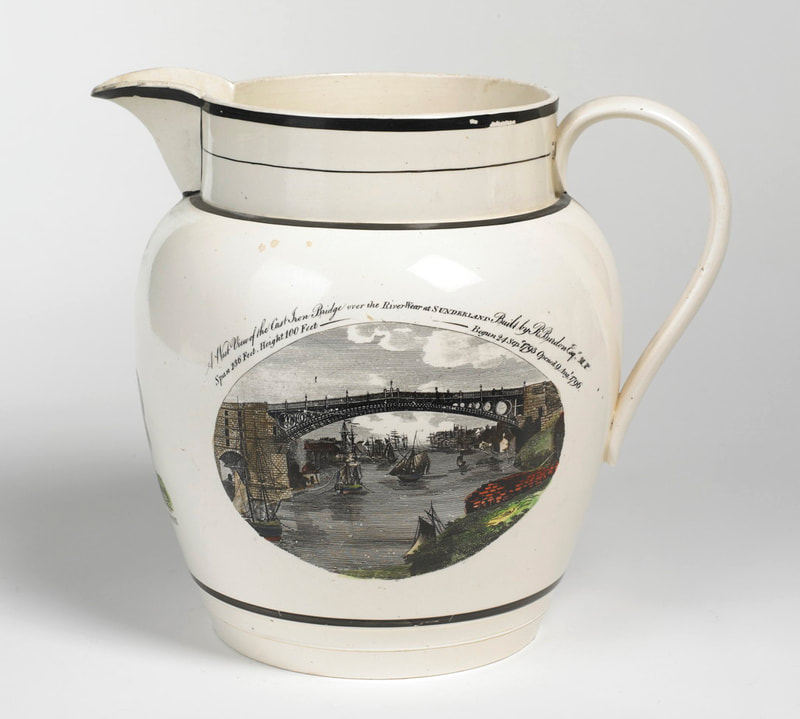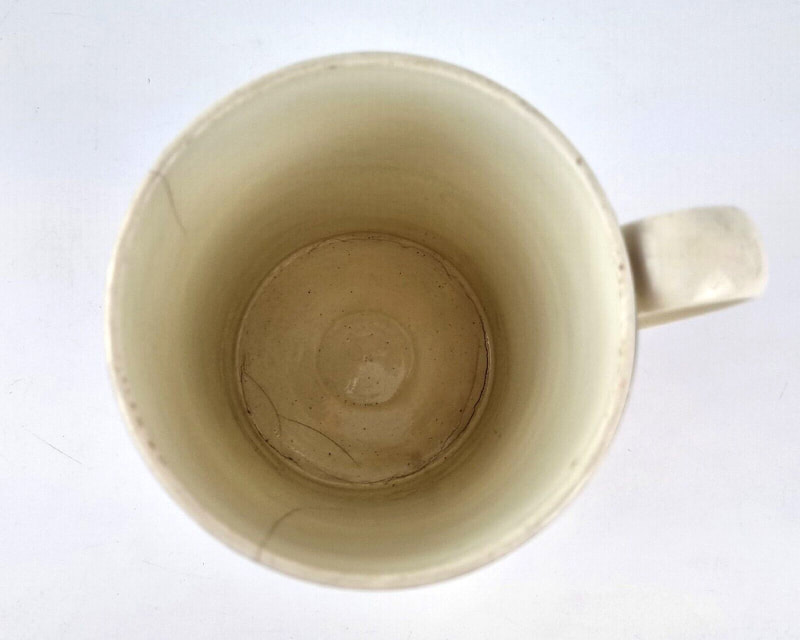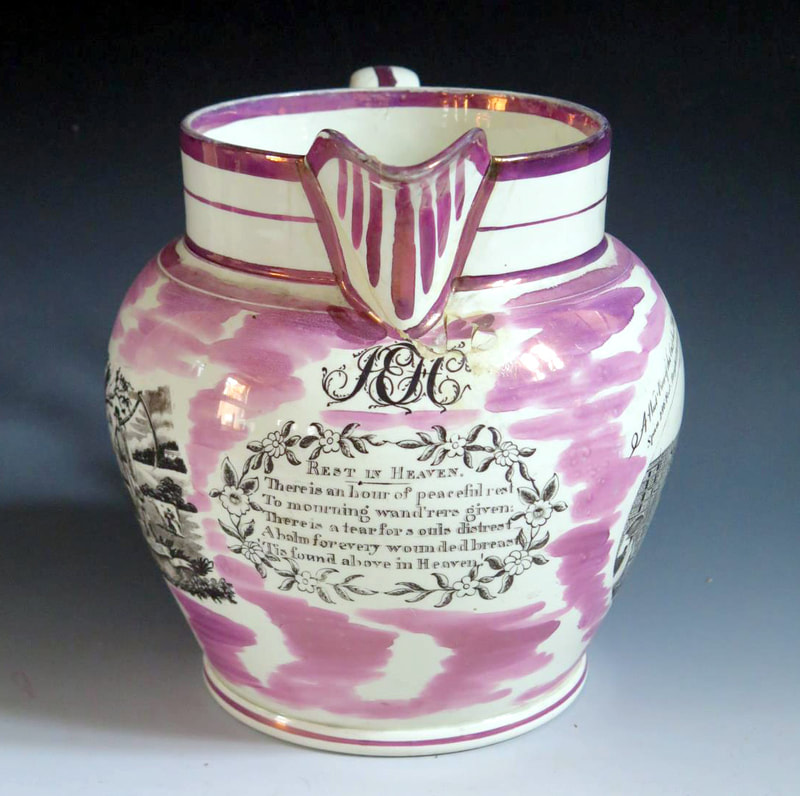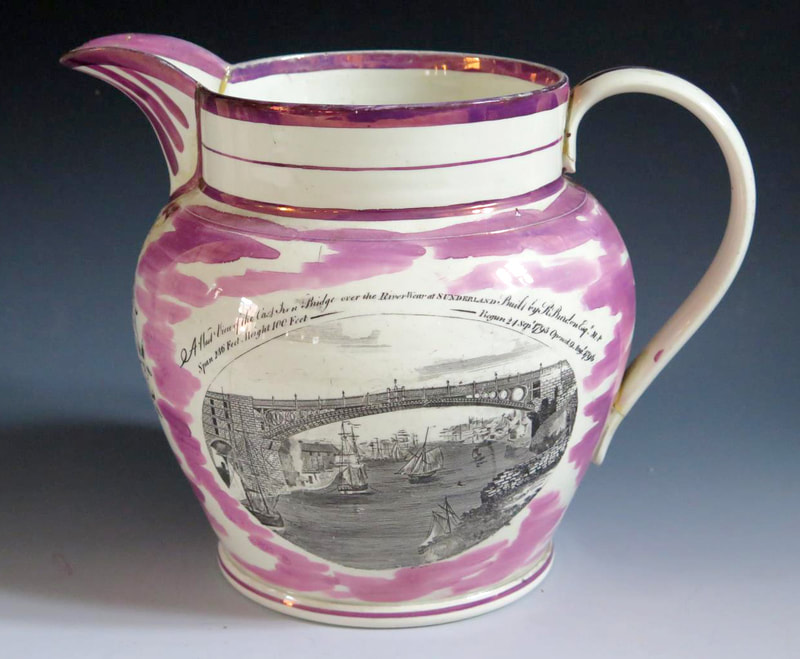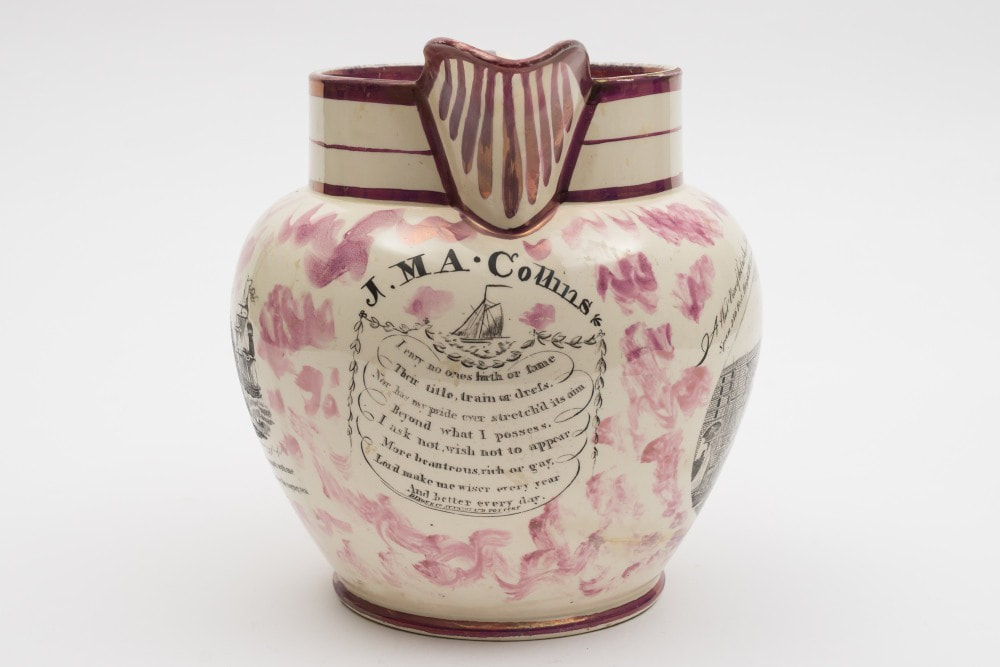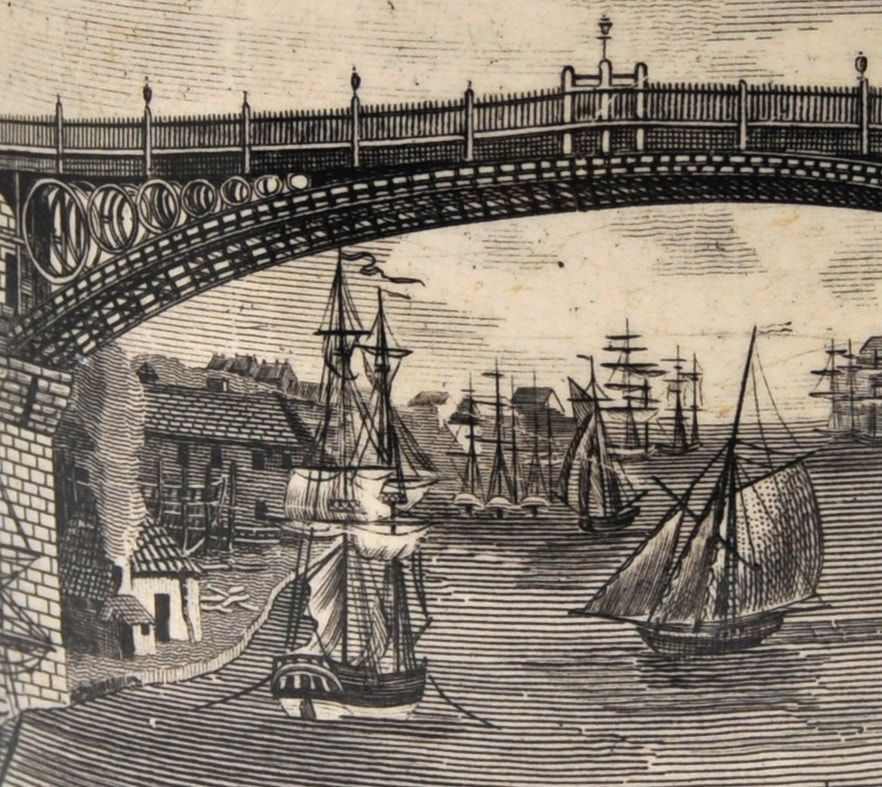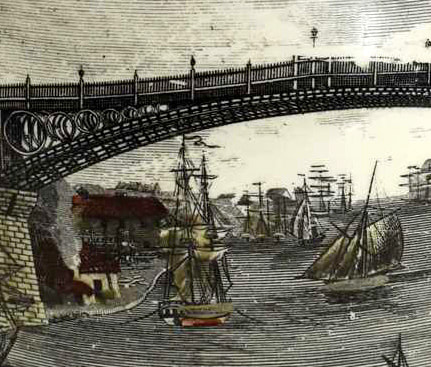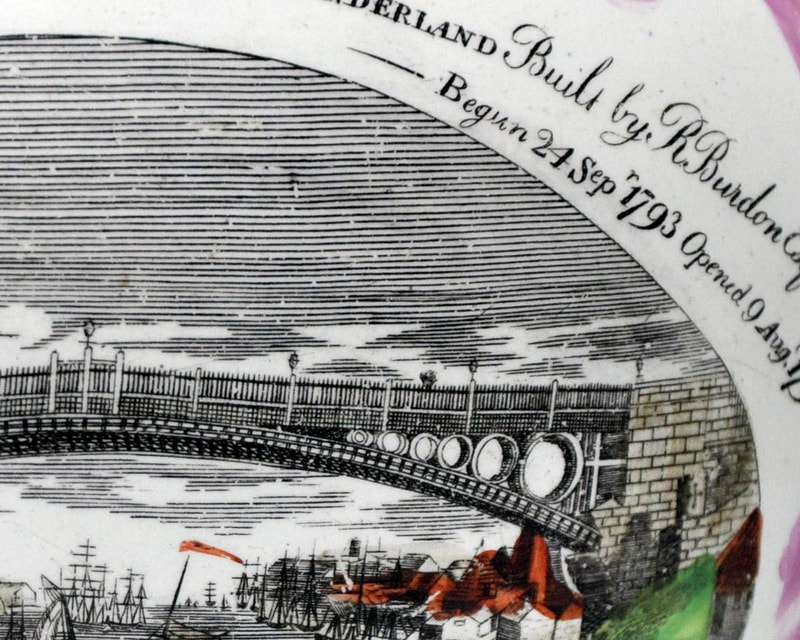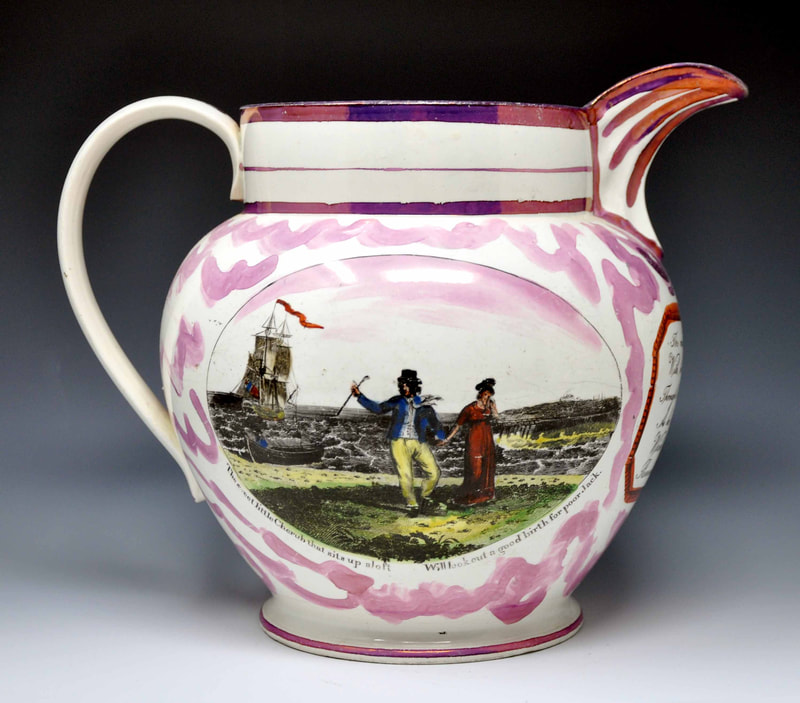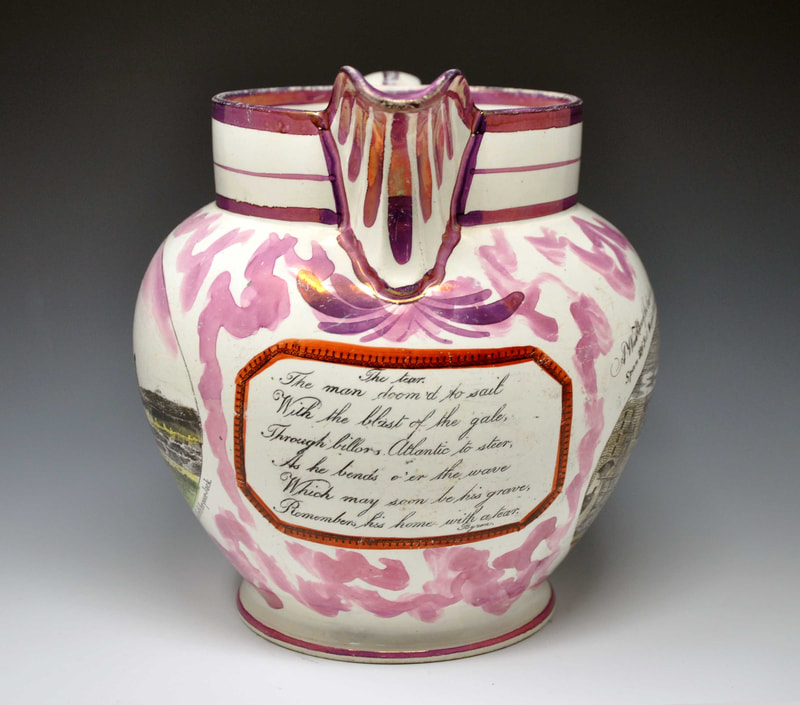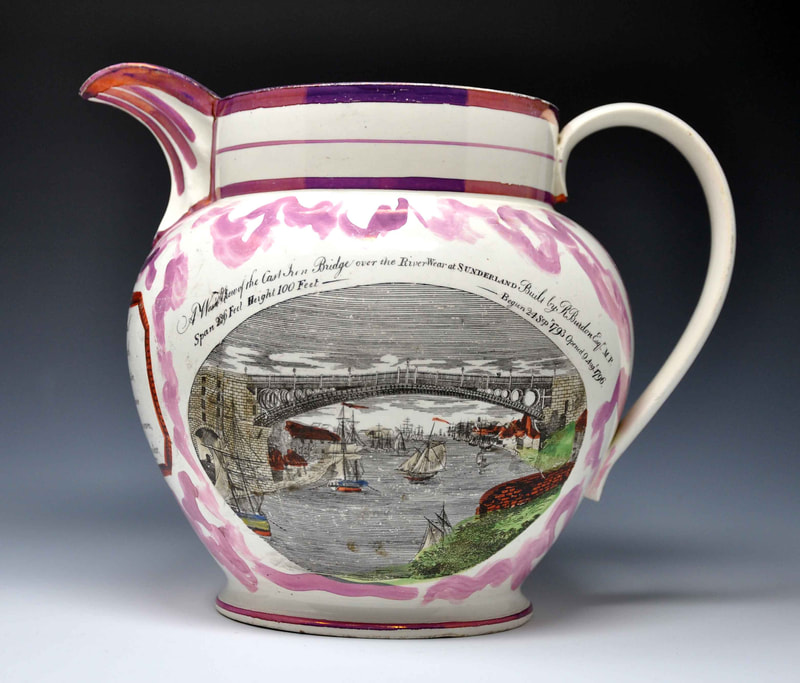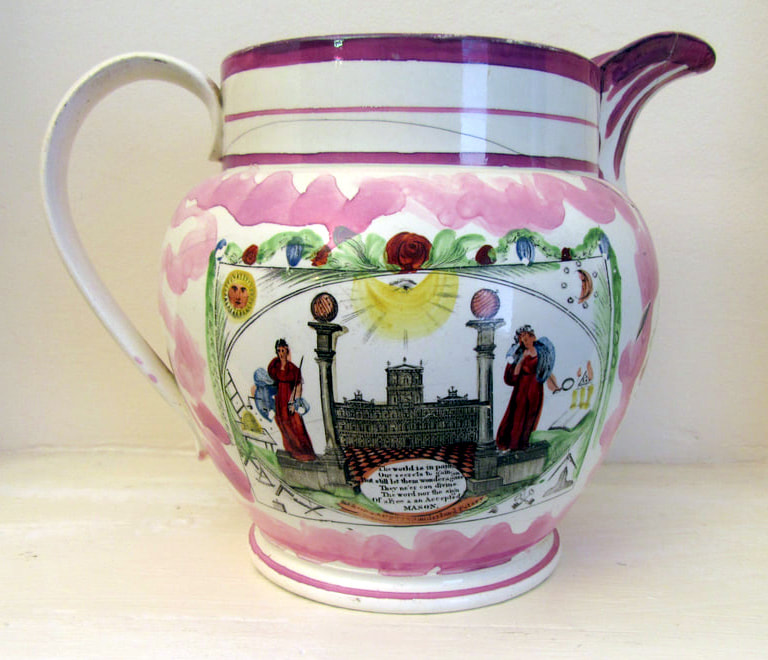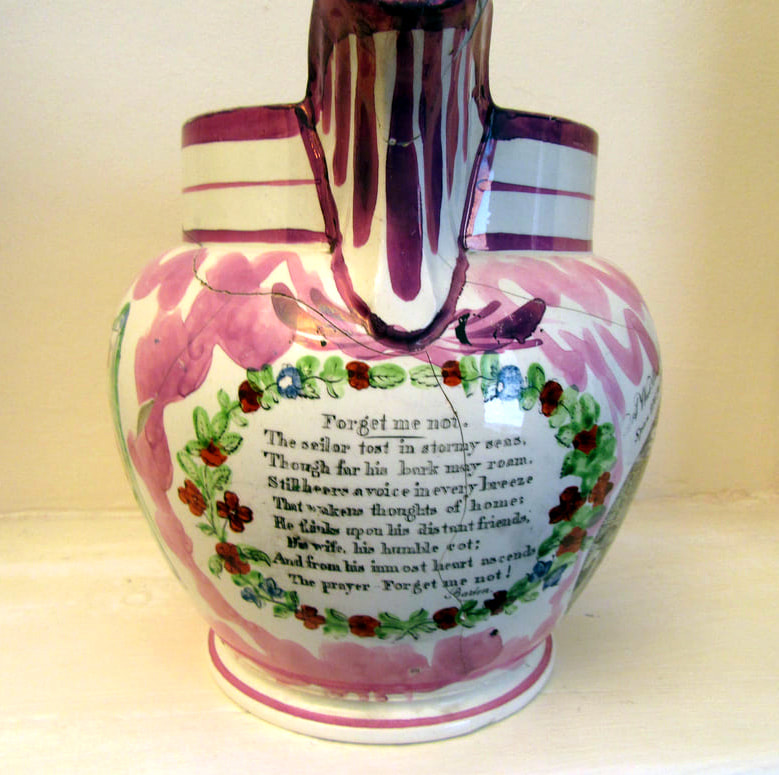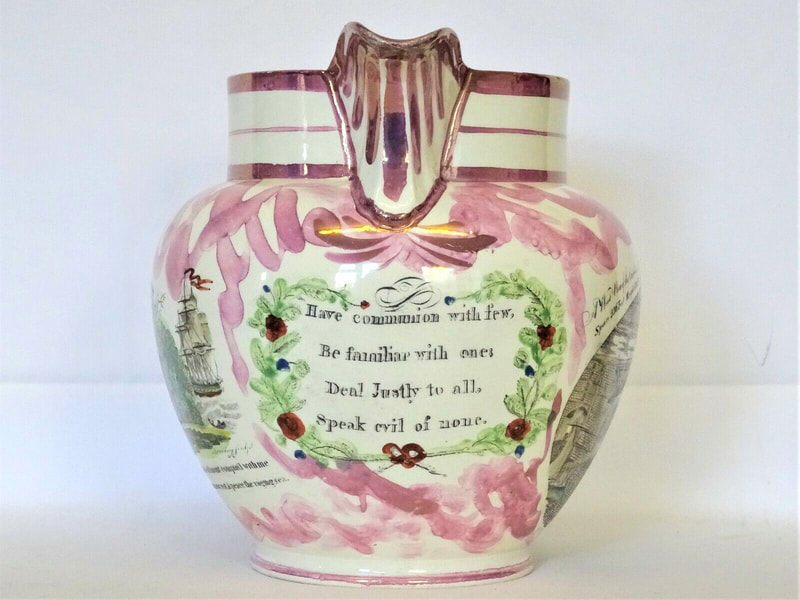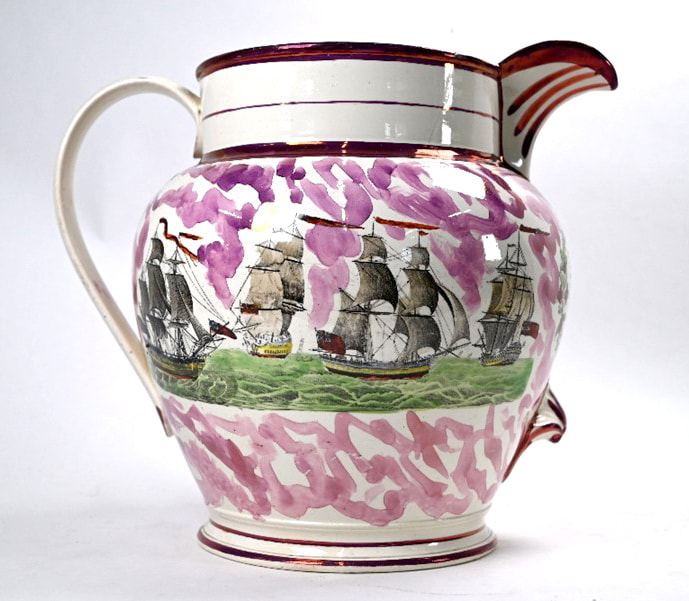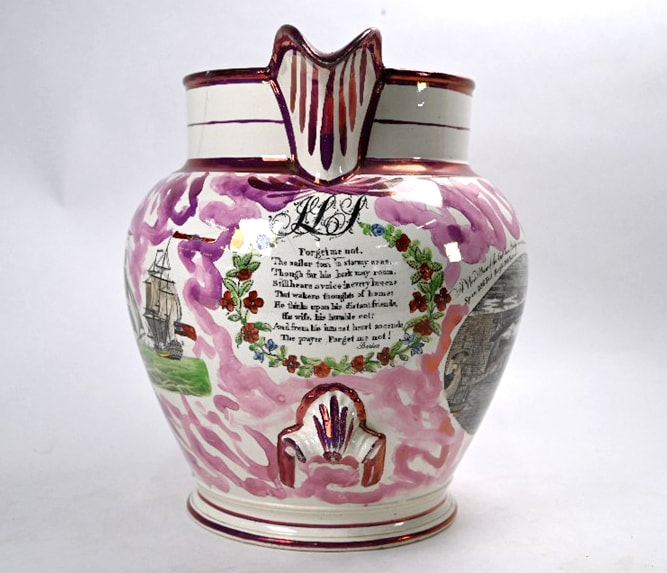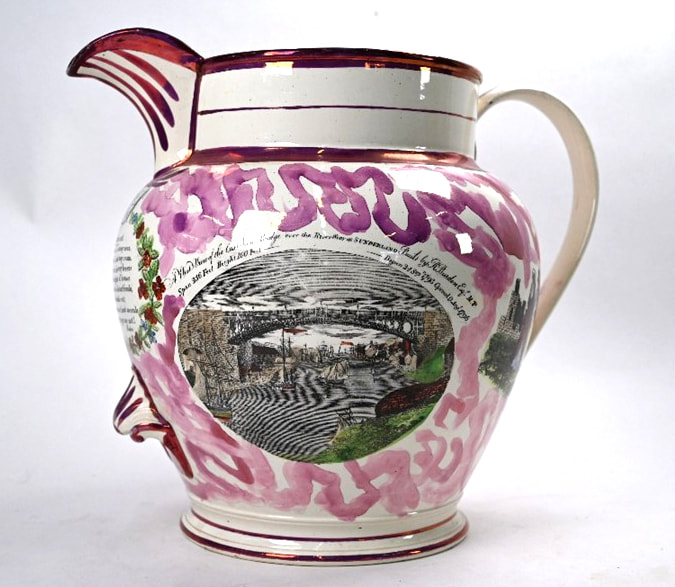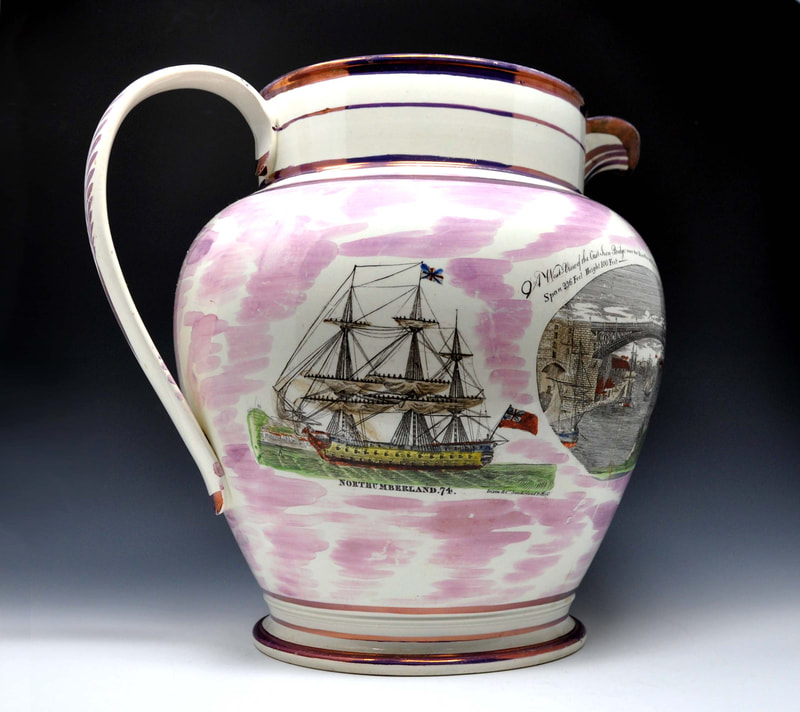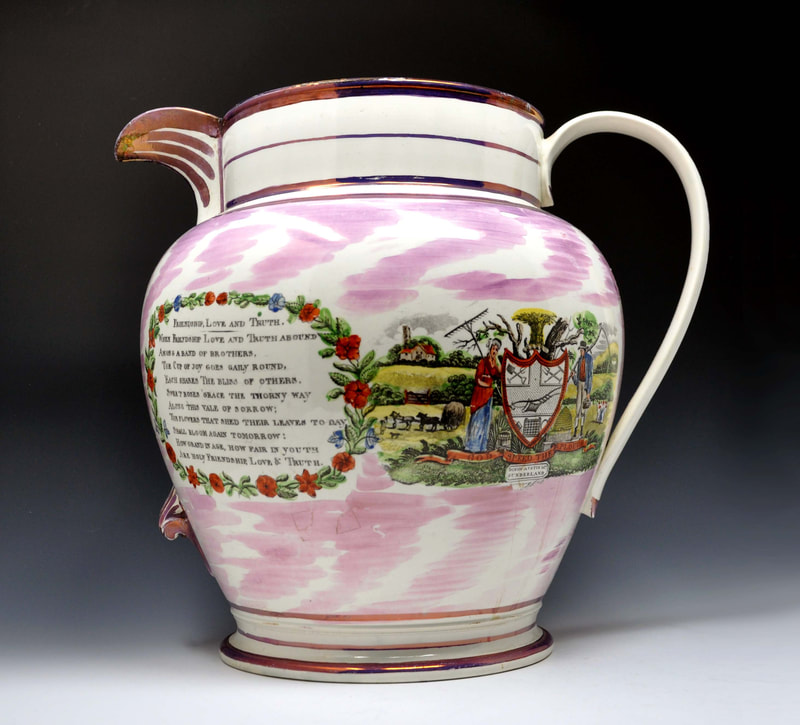West View of the Cast Iron Bridge – bridge 11
Attributed to Phillips & Co, Sunderland – 1807–1812 or
Dixon, Austin, Phillips and Co –1813–1818
This is a variation of Baker's bridge 11 with a Phillips & C Sunderland printed mark beneath.
The shape of the jugs above suggests they were made by one of the earlier Dixon partnerships, pre-1818. The transfer on the second jug is paired with the 'Sweet Little Cherub'. The mug, with a typical frog with red eyes, is bridge 11, without the maker's mark.
The masonic transfer below has the printed mark 'J Phillips & Co Sunderland Pottery', and the verse 'Phillips & Co Sunderland Pottery'
Dixon, Austin & Co, Sunderland Pottery (1818–1839) – plate 1
The transfer, Baker's bridge 11, on a large creamware jug with printed marks for Dixon & Co, Sunderland Pottery.
The first jug below has a printed mark under the farming transfer for 'Dixon, Austin & Co, Sunderland'.
Dixon, Austin & Co, Sunderland Pottery (1818–1839) – plate 1
The jugs below have Baker's bridge 11 and strong pink lustre decoration. There are no coloured enamels over the transfer. These jugs likely date from the 1820s.
Plate 1
The details below show the deterioration of transfer plate 1 over time. The first pair is from the Phillips creamware mug above, and the second from the masonic jug with printed 'Phillips' marks. Note, in particular, the deterioration of the cloud definition as time goes on.
The third pair (below) is from the later (1820s) lighter creamware jug with the broken handle, marked 'Dixon, Austin & Co'. The fourth is from the pink lustre farming jug above, again with a Dixon Austin mark. Various speckles and scratches show that these items have transfers from the same copper plate as the Phillips examples above.
All of this suggests that the bridge 11 view, which is larger than most transfers, was on a standalone copper plate. Over the years it was mixed and matched with other transfers with printed marks for J Phillips & Co, Dixon & Co, and Dixon, Austin & Co, as the Sunderland Pottery changed ownership.
Plate 2
After 1815, Phillips acquired a second site for his pottery at North Hylton (the first site being the Garrison Pottery in Sunderland). So Dixon, Austin and Co might have had two versions of the transfer for producing similar wares on two sites. An alternative (and perhaps more likely) explanation is that a new plate was engraved around 1830 when the first plate was worn out. Note the formation of the clouds in the details below.
Dixon, Austin & Co, Sunderland Pottery (1818–1839) – plate 2
The jugs below have a slight variation of Baker's bridge 11 transfer, decorated with coloured over-enamels.
Below, a very large jug with a handle to aid pouring.
And another of giant proportions (13 inches tall), dated 1832.
